Rheumatoid arthritis (RA) is an autoimmune condition that affects approximately 45,000 people in Ireland. This chronic illness affects three times more women than men – about 70% of people who have RA are female. RA can occur at any age, but is most commonly diagnosed between 30 and 50.
As RA is an autoimmune condition, the body’s immune system starts to target otherwise healthy tissue and joints in the body, leading to inflamed, hot and swollen joints. Small joints in the body, such as fingers, wrists, knees and elbows, are most commonly affected. This can lead to many symptoms, including joint pain, reduced movement and stiffness. Indeed, early morning stiffness that lasts longer than 30 minutes can be an early sign of RA.
The symptoms of RA can impact daily life, often making it difficult to engage in work and social activities
People who have RA can experience fatigue, which in turn may limit how active they are. Because of the inflammatory nature of RA, other issues can occur, such as an increased risk of cardiovascular disease. RA can also affect a person’s skin or eyes.
The symptoms of RA can impact daily life, often making it difficult to engage in work and social activities. There is no known cause of RA, although some research suggests that there may be a genetic link that is triggered by something in the environment. Making sure that RA is diagnosed as early as possible can mean that the impact of this condition is minimised. Your GP may conduct some tests to see if RA is a possible diagnosis, but this can only be confirmed by a rheumatologist.
Management of rheumatoid arthritis
RA is managed through medication and a healthy lifestyle. Although there is no cure for RA, medication for this condition has improved greatly in recent times – focusing on reducing inflammation and managing the symptoms.
Common medications include disease-modifying anti-rheumatic drugs (DMARDS), biologics and corticosteroids. RA is a progressive condition, so sticking to a medication regime is extremely important. Early diagnosis ensures that a person can start taking medication to minimise the impact of RA.
EULAR is one of the biggest organisations in the world engaged in improving the health of people who have rheumatic conditions
Lifestyle behaviours are the second essential part in the management of RA. The European League Against Rheumatism (EULAR) has published several guidelines on the importance of a healthy lifestyle in the management of RA. EULAR is one of the biggest organisations in the world engaged in improving the health of people who have rheumatic conditions. EULAR guidelines advocate healthy behaviours, including smoking cessation, a healthy diet and regular physical activity.
Physical activity in rheumatoid arthritis
“Being physically active is essential for people who have RA,” says Dr Louise Larkin, a lecturer in physiotherapy and researcher on physical activity in RA at the University of Limerick. However, being physically active at recommended levels is often a challenge for people who have RA, because of the symptoms.
“We have interviewed people who have RA and some have told us that they are afraid of overdoing it and causing more pain. This is a logical fear, however being active at the right level for each person and gradually increasing this activity over time to meet current physical activity recommendations has significant health benefits for someone living with RA.”
Some confusion exists about how safe it is to be physically active when you have RA
These benefits include improving the symptoms such as pain and fatigue, reducing the risk of cardiovascular disease and improving mental health.
Some confusion exists about how safe it is to be physically active when you have RA. Advice many years ago was to rest and avoid exercise, however, recent research has consistently shown that being physically active at recommended levels has no adverse effects.
This means that having RA shouldn’t act as a barrier to being physically active, and indeed the improvements in medical management for people who have RA mean that they can be more active.
Because of the important role physical activity has in the management of RA, EULAR published physical activity recommendations in 2018 specifically for people who have inflammatory arthritis (RA and spondyloarthritis) and osteoarthritis. These internationally recognised guidelines recommend that people who have RA should aim for a minimum of 30 minutes of moderate intensity aerobic exercise on five days per week (or vigorous intensity aerobic exercise for a minimum of 20 minutes on three days per week).
The talk test can help to figure out how what intensity you are exercising at – at moderate intensity you can have a conversation but can’t sing a song, whereas when exercising at a vigorous intensity you can’t have a conversation. Strengthening exercises, flexibility exercises and exercises that target balance and coordination are also recommended on two to three days per week.
Finding an activity that is enjoyable is a key part of becoming more active
“This can seem like a lot to a person who may not be physically active, but as a starting point aiming for 10-minute bouts of aerobic activity can have significant benefits for a person’s health,” says Dr Larkin.
Finding an activity that is enjoyable is a key part of becoming more active, and some of the popular choices for aerobic activity are walking, cycling and swimming. Exercising alone or with a family member or friend is a personal choice, although having social support has been found to increase physical activity participation in people who have RA. This social support may also come from others who have arthritis. Arthritis Ireland run exercise groups around the country for people who have arthritis and is a valuable and reliable source of information and support (visit www.arthritisireland.ie or call 1890-252-846.)
Research in rheumatoid arthritis
Researchers at the School of Allied Health at the University of Limerick are leading the way on physical activity in RA. Led by Professor Norelee Kennedy, Associate Professor of Physiotherapy, the team has been conducting research on physical activity in people who have RA for over 10 years.
It looks at different aspects of physical activity, including how to accurately measure physical activity in people who have RA and exploring the views of people who have RA, as well as rheumatology health professionals. A recent project investigated sleep in people who have RA and found that poor sleep can feature in this condition, but can be improved with a physical activity programme.
The research team, including Dr Louise Larkin, has developed a programme to help people who have RA to become more physically active. This is the first programme of its kind in Ireland and has been awarded funding from the Health Research Board.
Partnering with Dr Alexander Fraser, Consultant Rheumatologist at University Hospital Limerick, the PIPPRA project (physiotherapist-led physical intervention to promote physical activity in rheumatoid arthritis) will find out if the programme works at increasing physical activity. Prof Kennedy, who will lead the project, says, “our aim is to increase physical activity in people who have RA, which will hopefully reduce the symptoms they experience and improve their quality of life”.
If the project is successful in achieving this aim, the next step will be to deliver it on a larger scale in Ireland. For more information on the project, visit www.ul.ie/pippra
Claire Kinneavy is involved as a volunteer patient representative in the PIPPRA research project. Claire brings a unique perspective to the project, as she lives with rheumatoid arthritis (RA). She started experiencing symptoms when she was 24, at a time when she was a new mum.
“I began to experience stiffness in my fingers and fleeting pains in my joints. It affected my shoulders, elbows and wrists and there was fatigue as well,” she explains.
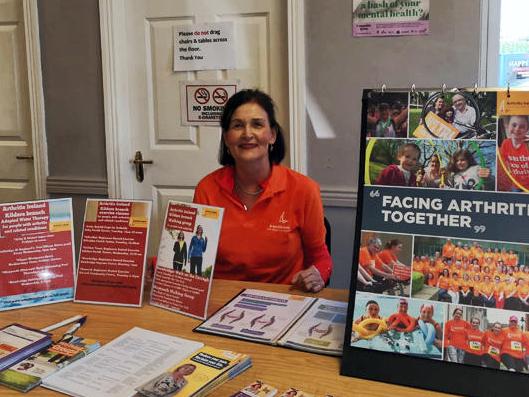
Claire Kinneavy.
Claire says there are any number of tasks that someone whose joints have been affected by RA finds difficult, so having a small baby to care for was extremely traumatic.
“Not only was it incredibly painful – the emotional pain was also intense. As a home economics teacher you are geared around practical things – efficiency is your middle name. So there were huge adjustments to be made,” she says.
Claire says that when flare-ups occur certain joints, such as the knees, may become particularly inflamed, preventing the person from socialising or pursuing their career. In her case, Claire was forced to stop work a year after her diagnosis and has not been back since. However, thanks to advances in the medical management of RA, she has experienced an improved quality of life over the past 15 years.
She is actively involved in Arthritis Ireland, leading a six-week course called the Living Well with Arthritis programme.
“The programme helps people living with arthritis to develop life skills so they can deal with practical matters on a daily basis and they also learn how to cope with the cycle of pain,” she explains, Claire says skills such as positive thinking, problem-solving, setting goals and good communication skills are all vital for a person who has arthritis.
I’ve found that being physically active really helps with my RA, helping to manage my pain and fatigue
Outside of her activities with Arthritis Ireland, she is an avid exerciser, who has taken up strength training at local circuit classes.
“I’ve found that being physically active really helps with my RA, helping to manage my pain and fatigue. Fatigue can be a big part of living with RA, which can be a challenge when life is busy.”
Claire’s involvement with Arthritis Ireland and exercise brought about a very exciting opportunity in 2016, when she presented to an international audience at the European League Against Rheumatism (EULAR) congress in London.
“Presenting on my experience of being physically active as someone who has RA was brilliant. The audience included researchers, academics, healthcare professionals and people who have RA. Having the opportunity to tell them how being active can help someone who has RA was fantastic.”
Rheumatoid arthritis (RA) is an autoimmune condition that affects approximately 45,000 people in Ireland. This chronic illness affects three times more women than men – about 70% of people who have RA are female. RA can occur at any age, but is most commonly diagnosed between 30 and 50.
As RA is an autoimmune condition, the body’s immune system starts to target otherwise healthy tissue and joints in the body, leading to inflamed, hot and swollen joints. Small joints in the body, such as fingers, wrists, knees and elbows, are most commonly affected. This can lead to many symptoms, including joint pain, reduced movement and stiffness. Indeed, early morning stiffness that lasts longer than 30 minutes can be an early sign of RA.
The symptoms of RA can impact daily life, often making it difficult to engage in work and social activities
People who have RA can experience fatigue, which in turn may limit how active they are. Because of the inflammatory nature of RA, other issues can occur, such as an increased risk of cardiovascular disease. RA can also affect a person’s skin or eyes.
The symptoms of RA can impact daily life, often making it difficult to engage in work and social activities. There is no known cause of RA, although some research suggests that there may be a genetic link that is triggered by something in the environment. Making sure that RA is diagnosed as early as possible can mean that the impact of this condition is minimised. Your GP may conduct some tests to see if RA is a possible diagnosis, but this can only be confirmed by a rheumatologist.
Management of rheumatoid arthritis
RA is managed through medication and a healthy lifestyle. Although there is no cure for RA, medication for this condition has improved greatly in recent times – focusing on reducing inflammation and managing the symptoms.
Common medications include disease-modifying anti-rheumatic drugs (DMARDS), biologics and corticosteroids. RA is a progressive condition, so sticking to a medication regime is extremely important. Early diagnosis ensures that a person can start taking medication to minimise the impact of RA.
EULAR is one of the biggest organisations in the world engaged in improving the health of people who have rheumatic conditions
Lifestyle behaviours are the second essential part in the management of RA. The European League Against Rheumatism (EULAR) has published several guidelines on the importance of a healthy lifestyle in the management of RA. EULAR is one of the biggest organisations in the world engaged in improving the health of people who have rheumatic conditions. EULAR guidelines advocate healthy behaviours, including smoking cessation, a healthy diet and regular physical activity.
Physical activity in rheumatoid arthritis
“Being physically active is essential for people who have RA,” says Dr Louise Larkin, a lecturer in physiotherapy and researcher on physical activity in RA at the University of Limerick. However, being physically active at recommended levels is often a challenge for people who have RA, because of the symptoms.
“We have interviewed people who have RA and some have told us that they are afraid of overdoing it and causing more pain. This is a logical fear, however being active at the right level for each person and gradually increasing this activity over time to meet current physical activity recommendations has significant health benefits for someone living with RA.”
Some confusion exists about how safe it is to be physically active when you have RA
These benefits include improving the symptoms such as pain and fatigue, reducing the risk of cardiovascular disease and improving mental health.
Some confusion exists about how safe it is to be physically active when you have RA. Advice many years ago was to rest and avoid exercise, however, recent research has consistently shown that being physically active at recommended levels has no adverse effects.
This means that having RA shouldn’t act as a barrier to being physically active, and indeed the improvements in medical management for people who have RA mean that they can be more active.
Because of the important role physical activity has in the management of RA, EULAR published physical activity recommendations in 2018 specifically for people who have inflammatory arthritis (RA and spondyloarthritis) and osteoarthritis. These internationally recognised guidelines recommend that people who have RA should aim for a minimum of 30 minutes of moderate intensity aerobic exercise on five days per week (or vigorous intensity aerobic exercise for a minimum of 20 minutes on three days per week).
The talk test can help to figure out how what intensity you are exercising at – at moderate intensity you can have a conversation but can’t sing a song, whereas when exercising at a vigorous intensity you can’t have a conversation. Strengthening exercises, flexibility exercises and exercises that target balance and coordination are also recommended on two to three days per week.
Finding an activity that is enjoyable is a key part of becoming more active
“This can seem like a lot to a person who may not be physically active, but as a starting point aiming for 10-minute bouts of aerobic activity can have significant benefits for a person’s health,” says Dr Larkin.
Finding an activity that is enjoyable is a key part of becoming more active, and some of the popular choices for aerobic activity are walking, cycling and swimming. Exercising alone or with a family member or friend is a personal choice, although having social support has been found to increase physical activity participation in people who have RA. This social support may also come from others who have arthritis. Arthritis Ireland run exercise groups around the country for people who have arthritis and is a valuable and reliable source of information and support (visit www.arthritisireland.ie or call 1890-252-846.)
Research in rheumatoid arthritis
Researchers at the School of Allied Health at the University of Limerick are leading the way on physical activity in RA. Led by Professor Norelee Kennedy, Associate Professor of Physiotherapy, the team has been conducting research on physical activity in people who have RA for over 10 years.
It looks at different aspects of physical activity, including how to accurately measure physical activity in people who have RA and exploring the views of people who have RA, as well as rheumatology health professionals. A recent project investigated sleep in people who have RA and found that poor sleep can feature in this condition, but can be improved with a physical activity programme.
The research team, including Dr Louise Larkin, has developed a programme to help people who have RA to become more physically active. This is the first programme of its kind in Ireland and has been awarded funding from the Health Research Board.
Partnering with Dr Alexander Fraser, Consultant Rheumatologist at University Hospital Limerick, the PIPPRA project (physiotherapist-led physical intervention to promote physical activity in rheumatoid arthritis) will find out if the programme works at increasing physical activity. Prof Kennedy, who will lead the project, says, “our aim is to increase physical activity in people who have RA, which will hopefully reduce the symptoms they experience and improve their quality of life”.
If the project is successful in achieving this aim, the next step will be to deliver it on a larger scale in Ireland. For more information on the project, visit www.ul.ie/pippra
Claire Kinneavy is involved as a volunteer patient representative in the PIPPRA research project. Claire brings a unique perspective to the project, as she lives with rheumatoid arthritis (RA). She started experiencing symptoms when she was 24, at a time when she was a new mum.
“I began to experience stiffness in my fingers and fleeting pains in my joints. It affected my shoulders, elbows and wrists and there was fatigue as well,” she explains.

Claire Kinneavy.
Claire says there are any number of tasks that someone whose joints have been affected by RA finds difficult, so having a small baby to care for was extremely traumatic.
“Not only was it incredibly painful – the emotional pain was also intense. As a home economics teacher you are geared around practical things – efficiency is your middle name. So there were huge adjustments to be made,” she says.
Claire says that when flare-ups occur certain joints, such as the knees, may become particularly inflamed, preventing the person from socialising or pursuing their career. In her case, Claire was forced to stop work a year after her diagnosis and has not been back since. However, thanks to advances in the medical management of RA, she has experienced an improved quality of life over the past 15 years.
She is actively involved in Arthritis Ireland, leading a six-week course called the Living Well with Arthritis programme.
“The programme helps people living with arthritis to develop life skills so they can deal with practical matters on a daily basis and they also learn how to cope with the cycle of pain,” she explains, Claire says skills such as positive thinking, problem-solving, setting goals and good communication skills are all vital for a person who has arthritis.
I’ve found that being physically active really helps with my RA, helping to manage my pain and fatigue
Outside of her activities with Arthritis Ireland, she is an avid exerciser, who has taken up strength training at local circuit classes.
“I’ve found that being physically active really helps with my RA, helping to manage my pain and fatigue. Fatigue can be a big part of living with RA, which can be a challenge when life is busy.”
Claire’s involvement with Arthritis Ireland and exercise brought about a very exciting opportunity in 2016, when she presented to an international audience at the European League Against Rheumatism (EULAR) congress in London.
“Presenting on my experience of being physically active as someone who has RA was brilliant. The audience included researchers, academics, healthcare professionals and people who have RA. Having the opportunity to tell them how being active can help someone who has RA was fantastic.”




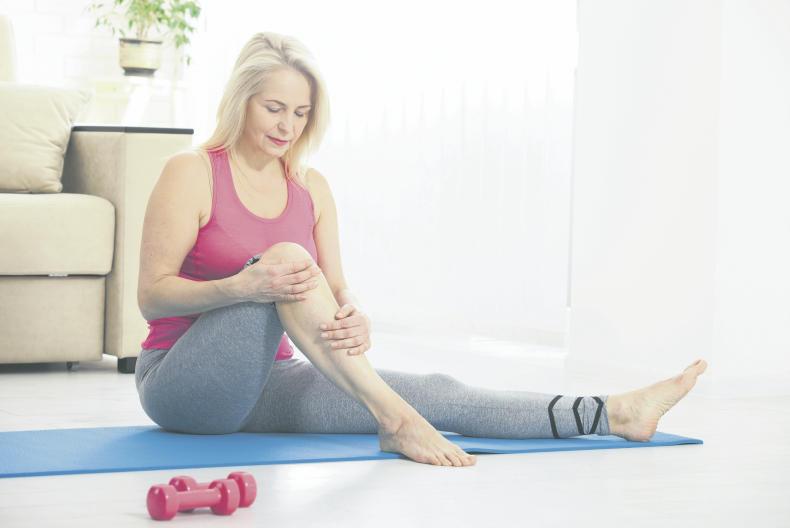

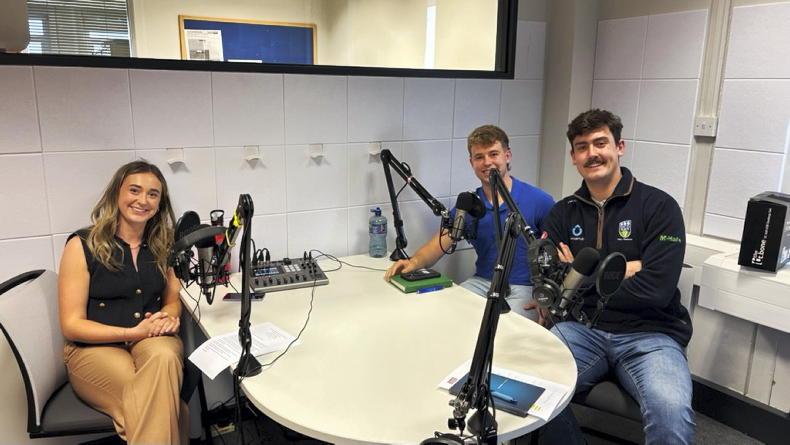
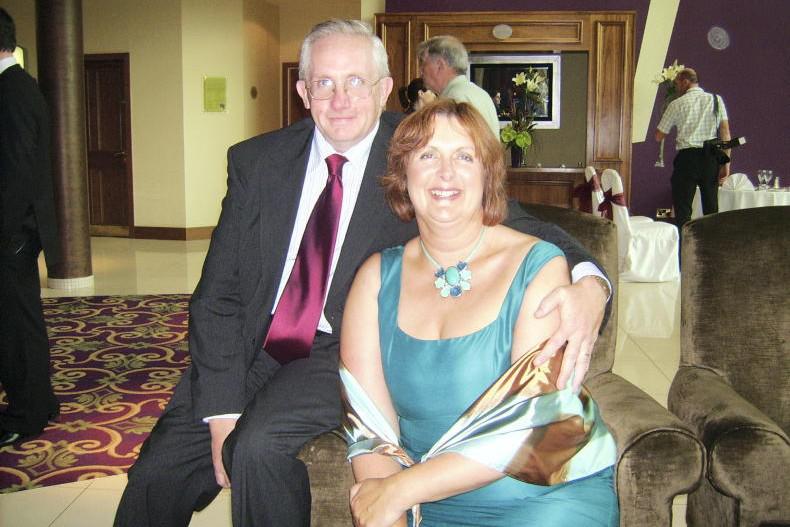
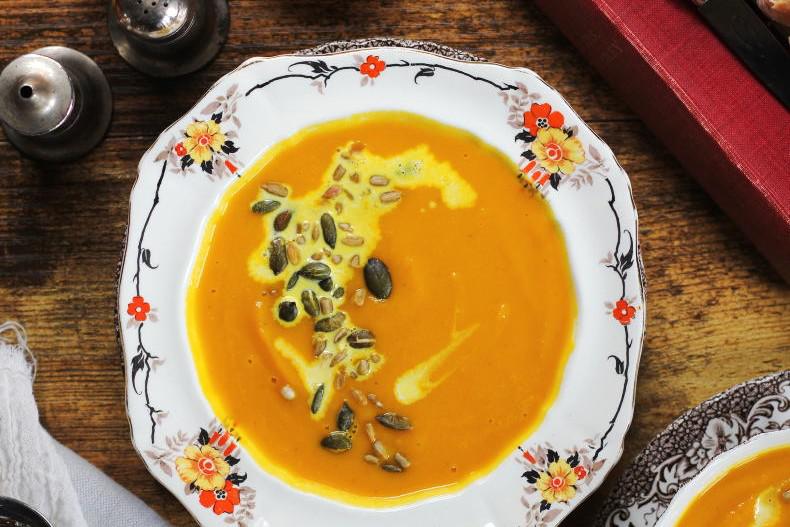
SHARING OPTIONS